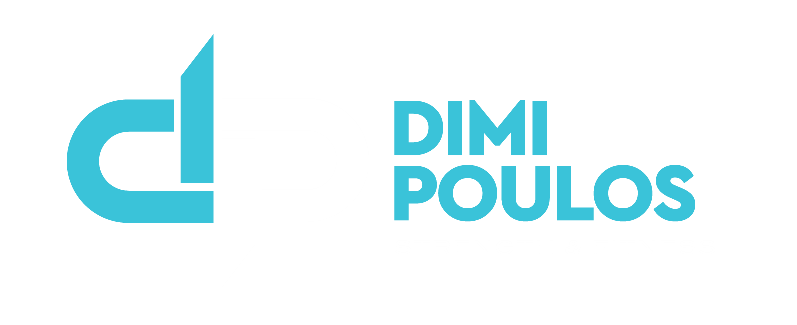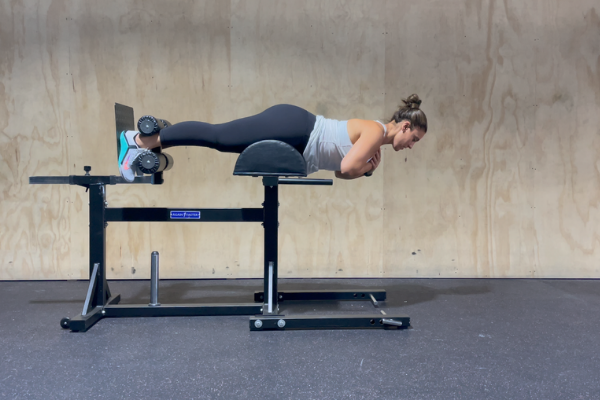The best core strength exercises for strength and power athletes are the moves that promote greater stiffness between the spine and pelvis.
The connection between the spine and pelvis make up the core — also known as the midline. If there is disconnect in the chain, the ability to apply force and power is reduced.
Consider performance metrics such as:
- Loaded squats and pulls.
- Power output in different directions.
- Change of direction.
- Jump height.
- Speed.
- Tackling ability.
Weakness at the core will dissipate energy. The greater the weakness between the spine and pelvis, the greater the reduction in the ability to perform specific tasks.
Consider the first pull of a weightlifting movement. The moment the spine loses its natural lumbar curve and flexes while lifting a weight, the less power the hips can generate. This weakness causes the spine to take on too much load, leading to reduced potential for maximal power at the hips.
For an athlete, the stronger the midline strength, the greater the ability to produce force and power, and improve overall performance.
So what are the best core exercises for strength and power athletes?
1. WEIGHTED OVERHEAD THREE-POINT LEG RAISE
Lying leg raise movements force the muscles that flex the hips to contract isometrically to stabilise. Having enough control to keep the pelvis in a fixed (tilted up) position during this exercise requires a great deal of strength and stability.
The weighted overhead three-point leg raise is perfect for this. As the legs drop down towards the ground, the moment arm (distance between the joint axis and line of force) increases. The longer the moment arm, the harder the hip flexor group must work to maintain this position. You will know if you’ve gone too far down, your pelvis will tilt down, causing your lower back to come off the ground and take on too much of the load.
Recommendations:
- The best exercises for core stability should be performed with an emphasis on quality, not quantity, so:
- Start with no weight and bent knees. If you can take your heels to the ground and keep the pelvis in a fixed tilted up position, try it with straight legs.
- If you find it’s easy to do with no weight, add load over your head.
- When you’re nailing the movement with load over your head, the next step is to shift the weight so it lines up under your eyes. This action of slightly moving the weight further over increases the moment arm. Thus, it will require the recruitment of more muscles to stabilise the pelvis and intensify the degree of difficulty.
2. BARBELL ROLL OUTS
If you struggle to keep your pelvis in a tilted up position during a leg raise, this might be an exercise you’re not quite ready for.
This movement requires a great deal of hip and shoulder stability as the moment arm increases (as you move further away from your knees). It also demands greater control and stability, as the midline flexes to bring the bar back to the start position.
The shoulder, spine and hip stabilisers must contract simultaneously to roll the bar back with control. If one part of the chain is broken, the entire movement pattern is compromised.
Strength and power athletes carry heavy loads, move around in different planes and perform at high speeds. The better stability an athlete can maintain when the line of force is at its furthest point away from the joint axis (for example, the absolute end range of a roll out), the stronger and more powerful they have the potential to be.
Recommendations:
- Start by walking your hands forward to a plank position, then walk your hands back (hand walkout). If you can do that without losing a tight position, try the roll out from your knees.
- If you feel the roll out in your back, or are bending your arms to pull the bar towards your body, you’re not ready to go any further out.
- Only when you can maintain the correct pelvis and shoulder position should you progress to rolling out further.
- The best way to build core strength is not to go beyond your limitations — stay within them and progress slowly.
3. GLUTE HAMSTRING RAISES
The glute hamstring raises are one of the most effective core strengthening exercises for the posterior chain.
Hip extensors are primarily driven by the posterior chain and are crucial for explosive power development in the lower extremity. The stronger the posterior chain, the greater the explosive potential.
In addition, strong hamstrings will also help to protect the knees. The anterior cruciate ligament (ACL) connects the femur (upper leg) to the tibia (lower leg). The hamstrings help to stabilise the knee by reducing the forward slide of the femur over the tibia. The stronger the hamstrings are, the greater the reduction in potential ACL tears and ruptures.
If you have access to one of these machines it’s a great tool to strengthen the hamstrings, as well as the glutes and erector spinae muscles.
Recommendations:
Alternatively, if you don’t have a glute hamstring developer machine (GHD), you can anchor your feet under a bench, weighted barbell or a fixed machine that has space for you to fit your feet under.
When performing the movement without a GHD, keep in mind, anchoring your feet under something changes the position. This positional change requires the knee to flex to a greater extent and will shift the contraction more dominantly to the hamstrings.
This is one of the best core strength exercises for isolating the hamstrings, but less so through the glutes and spinal stabilisers.
4. SINGLE ARM PLANK
Single arm planks are an anti-rotational isometric exercise that can help accelerate and decelerate in multiple directions.
Anti-rotational exercises are the best way to strengthen core muscles for multi-direction explosive power and to reduce the prevalence of injury when performing those movements.
Many other anti-rotational exercises are equally as beneficial. However, the advantage of the single arm plank is that it isn’t a highly skilled exercise and is easy to perform.
Recommendations:
This is the best core strength exercise to do anywhere, anytime and requires a relatively low skill level to execute.
Conclusion
The best core strength exercises are those where when we increase the distance away from the joint axis and move the limbs as far away from the midline as possible; a strong and stable body line is still maintained.
Whether you’re lifting weights, changing direction at high velocities, jumping or tackling — the stronger the midline, the better performance potential you have.
Movements such as:
Weighted overhead three-point leg raises.
- Barbell roll outs.
- Glute hamstring raises.
- Single arm planks.
These are only a few examples of some of the most effective core strengthening exercises you can implement into your training to become stronger and more powerful.

